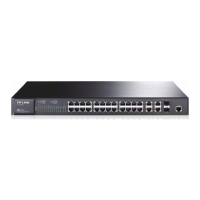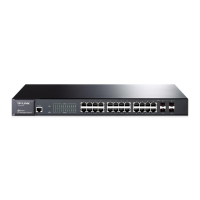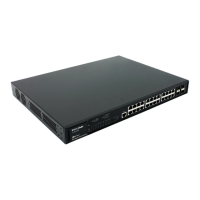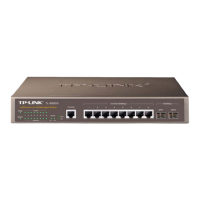User Guide 472
Configuring QoS Auto VoIP Configuration
Interface Mode Select the interface mode for the port.
Disable: Disable the Auto VoIP function on the corresponding port.
None: Allow the voice devices to use its own configuration to send voice traffic.
VLAN ID: The voice devices will send voice packets with desired VLAN tag. If this
mode is selected, it is necessary to specify the VLAN ID in the Value field.
In addition, you need to configure the 802.1Q VLAN to ensure the corresponding
ports can forward the packets normally.
Dot1p: The voice devices will send voice packets with desired 802.1p priority. If
this mode is selected, it is necessary to specify 802.1p priority in the Value field.
In addition, you can configure the Class of Service to make the switch process the
packets according to the 802.1p priority.
Untagged: The voice devices will send untagged voice packets.
Value Enter the value of VLAN ID or 802.1p priority for the port according to the
Interface Mode configurations.
CoS Override
Mode
Enable or disable the Class of Service override mode.
Enabled: Enable CoS override. The switch will ignore the 802.1p priority in the
voice packets and put the packets in TC-5 directly.
Disabled: Disable CoS override. The switch will then put the voice packets in the
corresponding TC queue according to Class of Service settings.
Operational
Status
Displays the operating status of the Voice VLAN feature on the interface. To make
it enabled, you must enable the Voice VLAN both globally and on the interface.
DSCP Value Enter the value of DSCP priority. The voice device will send the packets with the
corresponding DSCP value.
In addition, you can configure the Class of Service to make the switch process the
packets according to the DSCP priority.
3) Click Apply.
5.2 Using the CLI
Follow these steps to configure Auto VoIP:
Step 1 configure
Enter global configuration mode.
Step 2 auto-voip
Enable Auto VoIP globally.
Downloaded from ManualsNet.com search engine

